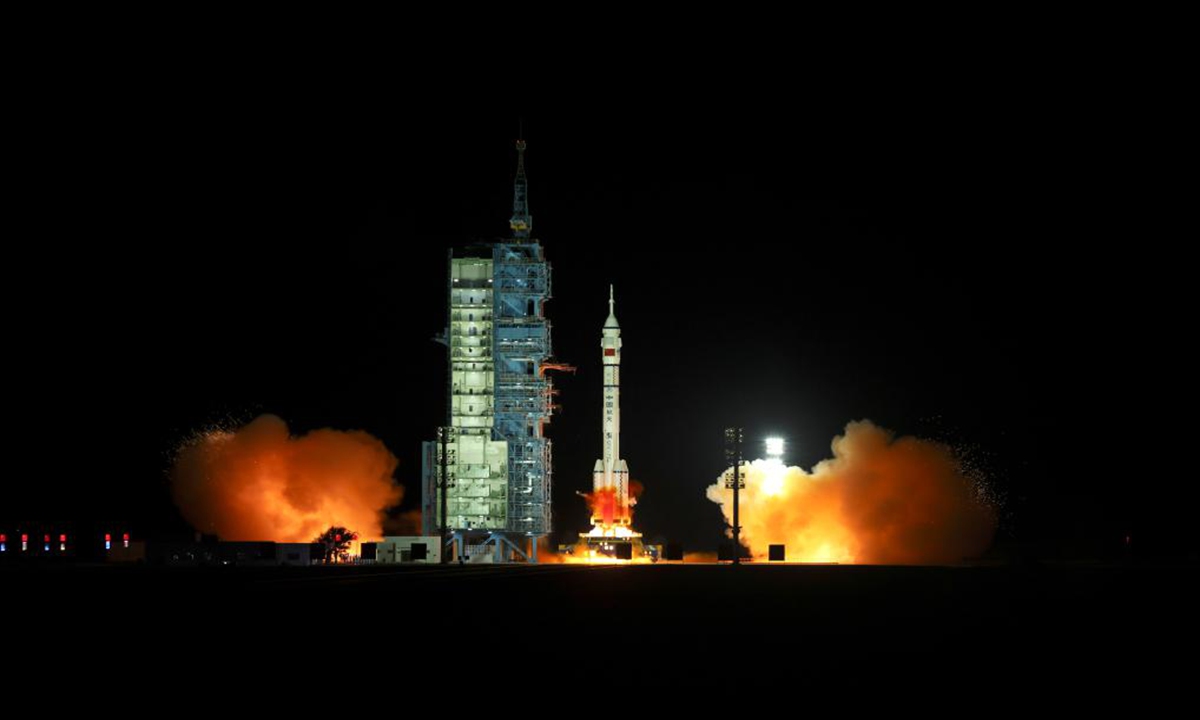
The Shenzhou-21 crewed spaceship, atop a Long March-2F carrier rocket, blasts off from the Jiuquan Satellite Launch Center in Northwest China, October 31, 2025. Photo: Xinhua
China’s Manned Space Agency (CMSA) announced on Saturday via its official WeChat account four spaceflight missions scheduled for 2026 and invited public submissions for the annual mission emblems. Among the missions, one taikonaut from the Shenzhou-22 crew will carry out a long-duration stay in orbit lasting more than one year.
The four missions are Tianzhou-10 cargo mission (TZ-10), Shenzhou-22 (SZ-22) and Shenzhou-23 (SZ-23) manned spaceflight missions, and Mengzhou-1 (MZ-1) spacecraft mission. The announcement includes details such as launch sites, docking methods, and primary mission objectives. As specified, one taikonaut from the Shenzhou-22 crew will remain in orbit for more than a year to carry out long-duration experiments.
The design proposals for the annual flight mission emblem (including design explanations) are open to any individual, legal entity, or organization that supports China’s crewed space program, according to a Saturday announcement on CMSA’s WeChat account.
The SZ-22 and SZ-23 crewed missions are scheduled to launch from the Jiuquan Satellite Launch Center in Northwest China’s Gansu Province. On SZ-22, one taikonaut will remain aboard the Tiangong space station for over a year. The missions will also include spacewalks, airlock operations for cargo, and ongoing space science experiments and technology tests.
The MZ-1 mission will launch from Wenchang using the Long March 10A (CZ-10A) rocket for the first time. The flight will conduct uncrewed test operations and mark the maiden flight of the Mengzhou next-generation crewed spacecraft.
The TZ-10 cargo spacecraft is scheduled to launch from the Wenchang Space Launch Site in South China’s Hainan Province. Its main missions include delivering crew supplies, extravehicular suits, maintenance parts, propellant for platform operations, as well as various payloads and samples for research.
